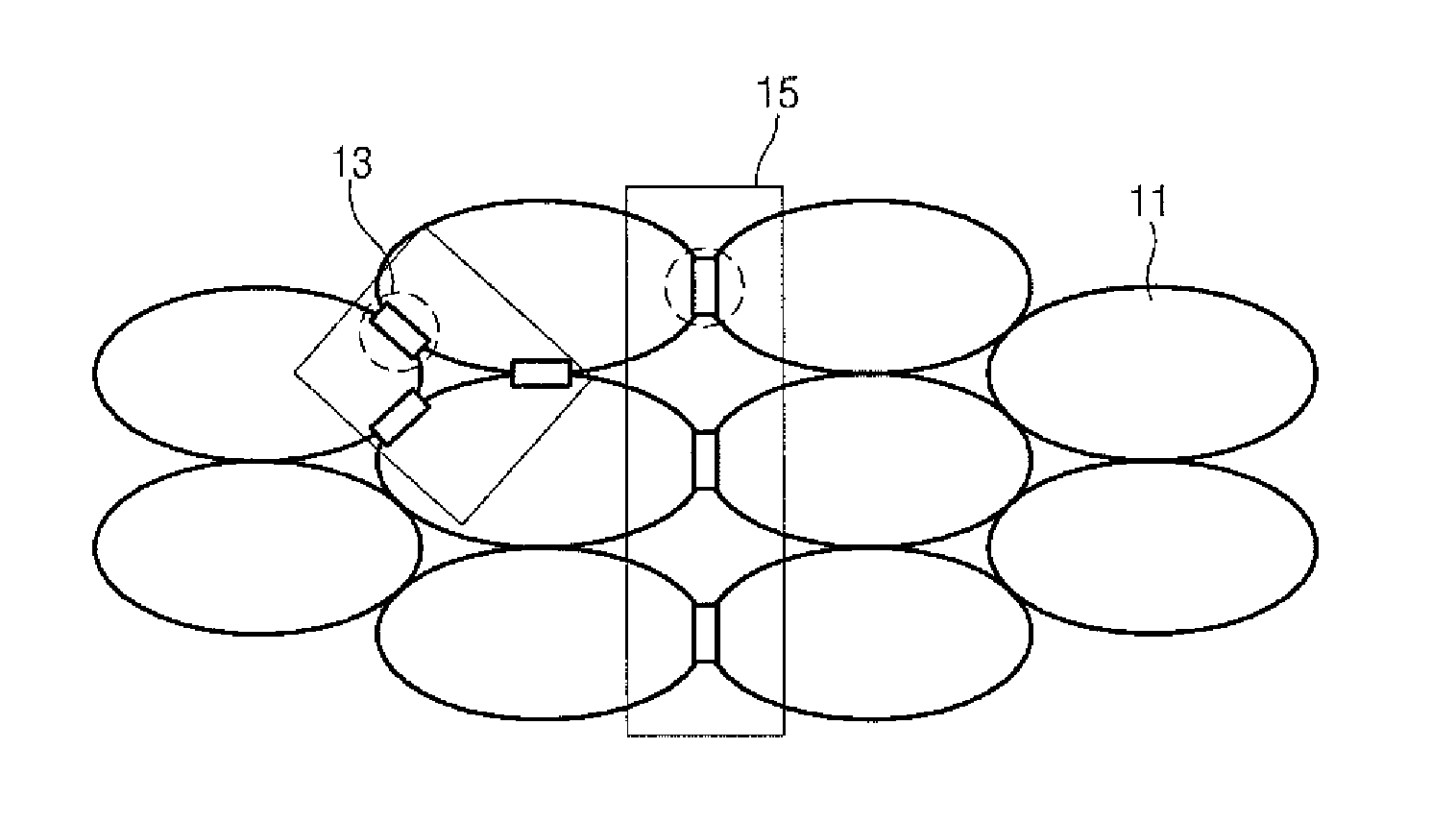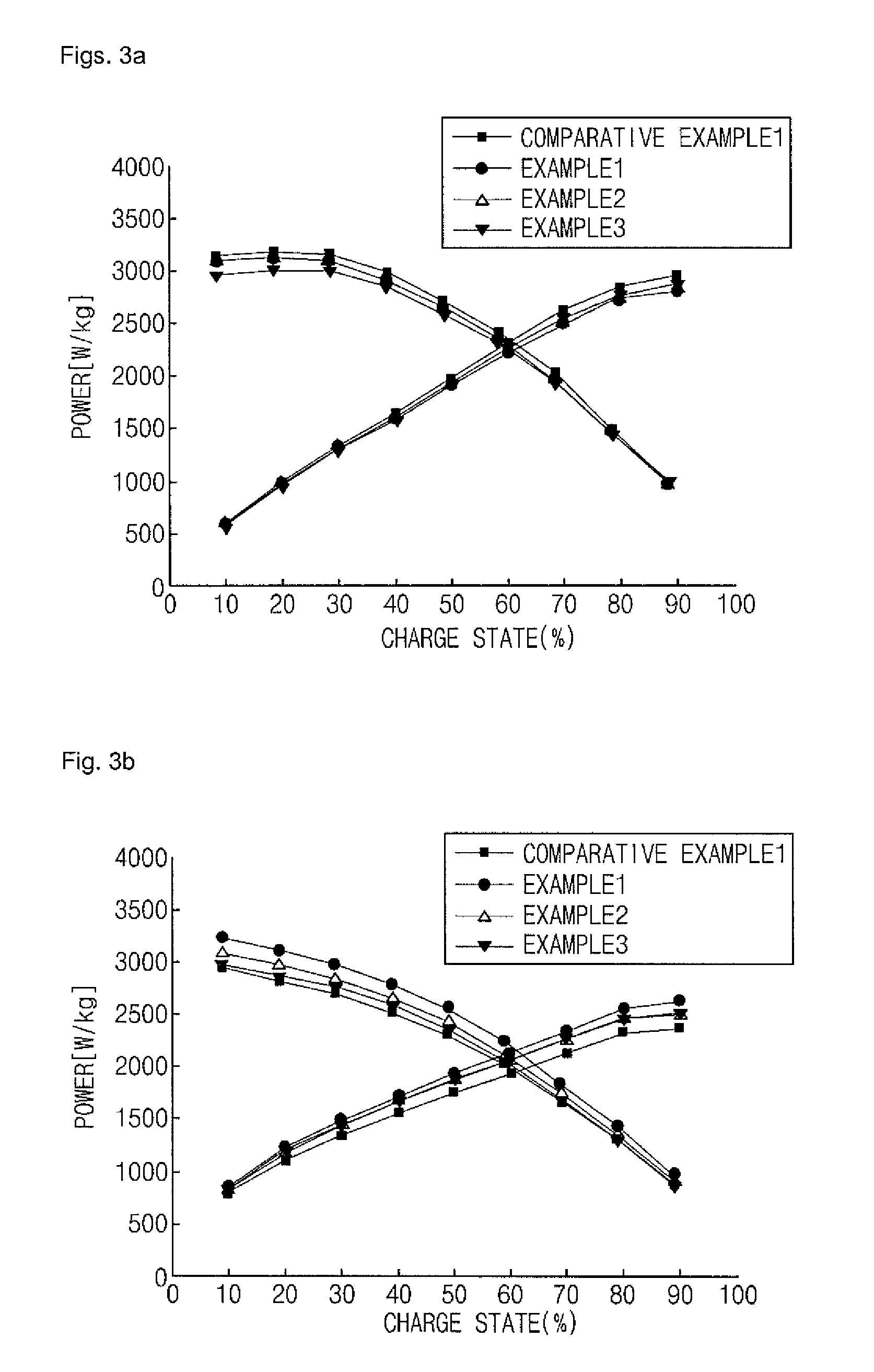Anode for secondary battery and lithium secondary battery including same
a secondary battery and lithium secondary battery technology, applied in the field of secondary batteries and lithium secondary batteries including same, can solve the problems of reducing the cycle life of the battery, affecting the efficiency of electron migration, so as to improve the charge-discharge characteristics and cycle characteristics of the lithium secondary battery. , the effect of large volume chang
- Summary
- Abstract
- Description
- Claims
- Application Information
AI Technical Summary
Benefits of technology
Problems solved by technology
Method used
Image
Examples
preparation example 1
[0057]A slurry for a second coating layer was prepared by dissolving polyacrylonitrile (PAN, 2 g) in 100 mL of N-methylpyrrolidone (NMP) and stirring for 1 hour.
preparation example 2
[0058]A slurry for a second coating layer was prepared in the same manner as in Preparation Example 1, except for using polyvinylidene fluoride (PVDF) instead of the polyacrylonitrile (PAN).
preparation example 3
[0059]A slurry for a second coating layer was prepared in the same manner as in Preparation Example 1, except for using an acrylonitrile-containing binder (X-linking agent) instead of the polyacrylonitrile (PAN).
II. Fabrication of Anode
PUM
| Property | Measurement | Unit |
|---|---|---|
| thickness | aaaaa | aaaaa |
| thickness | aaaaa | aaaaa |
| contact area | aaaaa | aaaaa |
Abstract
Description
Claims
Application Information
 Login to View More
Login to View More - R&D
- Intellectual Property
- Life Sciences
- Materials
- Tech Scout
- Unparalleled Data Quality
- Higher Quality Content
- 60% Fewer Hallucinations
Browse by: Latest US Patents, China's latest patents, Technical Efficacy Thesaurus, Application Domain, Technology Topic, Popular Technical Reports.
© 2025 PatSnap. All rights reserved.Legal|Privacy policy|Modern Slavery Act Transparency Statement|Sitemap|About US| Contact US: help@patsnap.com



